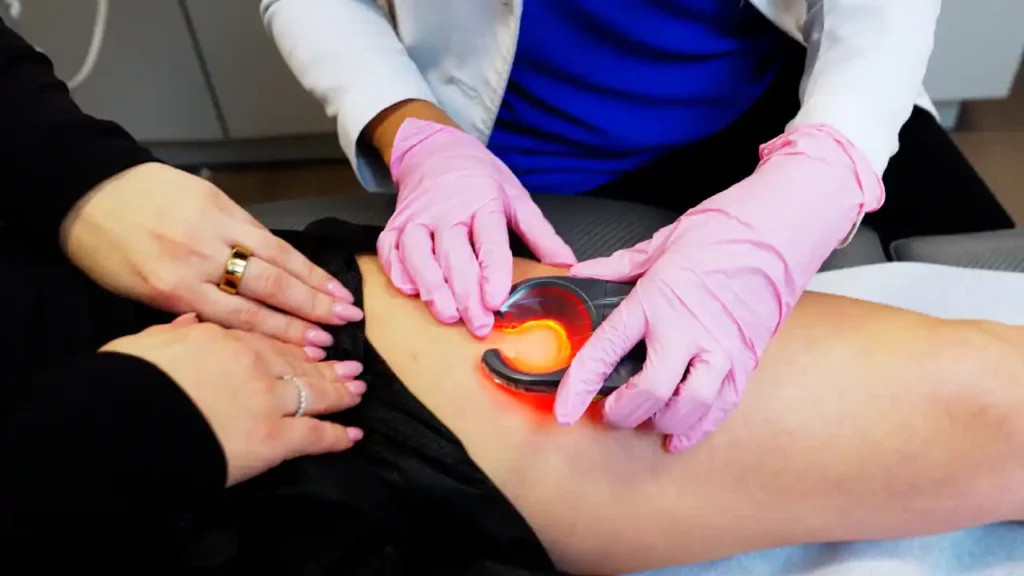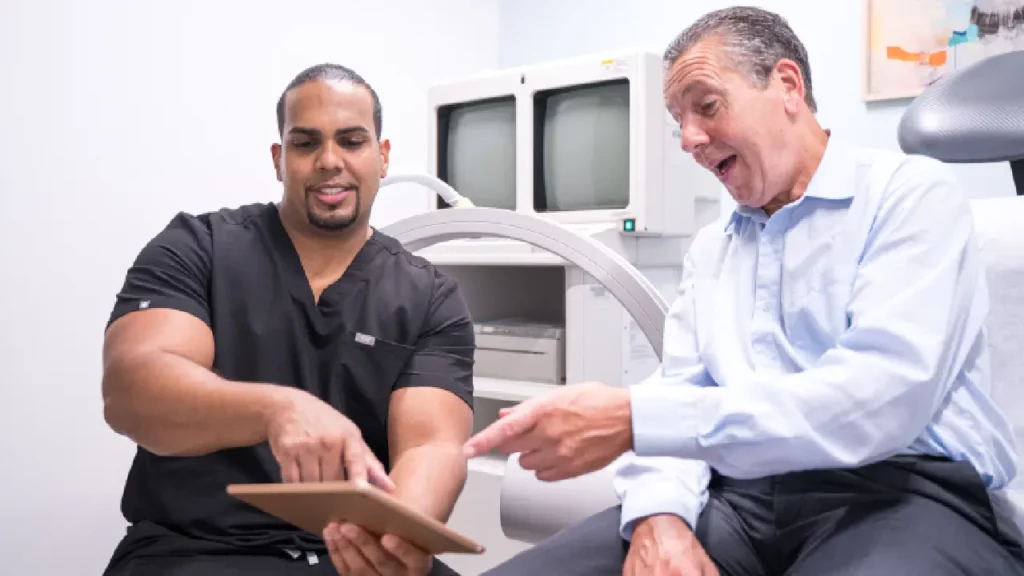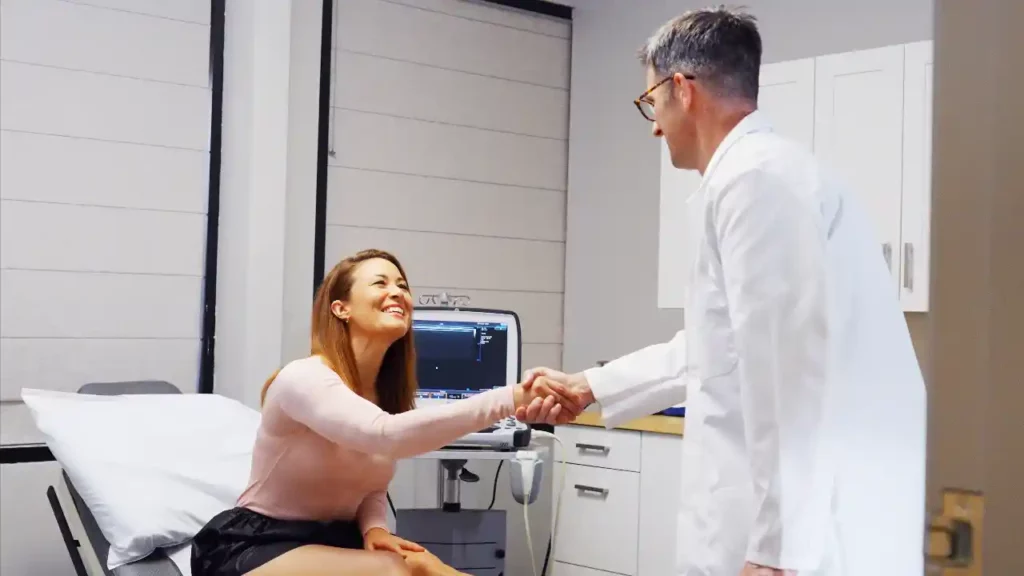How to Get Rid of Spider Veins? 5 Popular Treatments
Spider veins can be a frustrating and uncomfortable cosmetic concern for many. These tiny, discolored veins often appear on the legs or face and can be caused by various factors, such as genetics, pregnancy, hormonal changes, or prolonged periods of sitting or standing. While lifestyle changes like regular exercise can help prevent spider veins, minimally invasive vein treatments are often necessary to effectively get rid of them.
At Vein Treatment, we understand how impactful spider veins can be on your confidence, which is why we offer a range of spider vein treatments to help you achieve smoother, clearer skin. While some lifestyle adjustments can help improve circulation and reduce the risk of spider veins, medical treatments are often required to address the underlying cause. If you’re wondering how to get rid of spider veins, you’re in the right place.
In this article, we’ll walk you through five popular methods for eliminating spider veins, from simple lifestyle changes to professional treatments offered at Vein Treatment clinics.
1. Exercise Regularly to Improve Circulation
One of the most effective ways to prevent and manage spider veins is by incorporating regular exercise into your routine. Physical activity helps improve circulation, strengthens blood vessels, and reduces the pressure that can lead to vein issues. When your veins are under less strain, your risk of developing spider veins can be significantly reduced.
Focus on exercises that promote good circulation, such as walking, swimming, cycling, or low-impact aerobics. These activities help the blood in your veins flow more easily, reducing the likelihood of blood pooling, which can cause veins to become swollen and visible. Exercise won’t treat spider veins, but it may prevent the symptoms from worsening.
2. Maintain a Healthy Weight to Reduce Pressure on Veins
Excess weight can place significant pressure on your veins, especially in your lower body. This pressure can lead to the formation of spider veins and more serious venous conditions like varicose veins. Maintaining a healthy weight can alleviate this strain on your veins.
Eating a balanced diet rich in fiber, fruits, vegetables, and lean proteins can help you manage weight effectively. In addition to watching what you eat, staying active will help you maintain that healthy weight and minimize the risk of spider veins.
3. Wear Compression Stockings to Support Your Veins
Compression stockings are a simple yet effective way to support your veins and reduce the visibility of spider veins. These specially designed stockings gently squeeze the legs to help improve blood flow and prevent blood from pooling in the veins. When worn consistently, they can relieve discomfort and even prevent new spider veins from forming.
Compression stockings are especially helpful for individuals who spend a lot of time on their feet or experience aching and heaviness in their legs. The stockings come in various compression levels, so it’s important to consult a vein doctor to determine which option is best for you. Visit your nearest vein clinic to discuss the right compression stockings for your needs.
4. Undergo Sclerotherapy for Visible Spider Veins
Sclerotherapy is one of the most popular and effective treatments for getting rid of spider veins. This minimally invasive procedure involves injecting a special solution directly into the affected veins. The solution causes the vein to collapse and eventually fade from view.
Sclerotherapy is generally performed in a vein treatment clinic and doesn’t require any anesthesia. Each session typically takes about 15 to 30 minutes, and patients can return to their daily activities immediately afterward. Over time, the treated spider veins will fade, leaving you with clearer, smoother skin. Sclerotherapy is ideal for individuals with visible spider veins.
5. Diagnose and Treat Underlying Venous Insufficiency (If Necessary)
Sometimes, spider veins are a sign of an underlying condition called venous insufficiency, where the valves in your veins are not functioning properly. When this happens, blood can pool in the veins, causing them to become enlarged and visible. In such cases, treating the underlying venous insufficiency is essential for long-term relief.
If venous insufficiency is diagnosed, your vein doctor may recommend additional treatments to address the root cause of the problem. These minimally invasive vein treatments could include endovenous laser ablation, radiofrequency ablation, VenaSeal, ClariVein, or, in some cases, ambulatory phlebectomy for large, bulging varicose veins. Addressing the underlying venous insufficiency can help prevent future spider veins from forming and improve overall vein health.
How to Get Rid of Spider Veins for Good
Getting rid of spider veins requires lifestyle changes and medical treatments. At Vein Treatment, our team of experienced, board-certified vein doctors can guide you through these treatment options and help you create a personalized plan that works for you.
Remember, most vein treatments are covered by medical insurance if they’re deemed medically necessary. Whether you’re dealing with visible spider veins or more complex venous issues, contact us to schedule a consultation at one of our vein clinics in New York, New Jersey, California, or Maryland. We are here to provide the best possible care to help you get rid of spider veins and achieve healthier, more beautiful legs.









